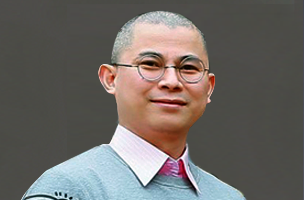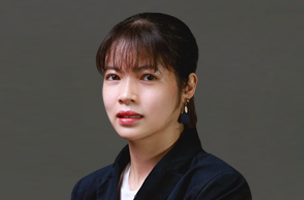Industrial Design in CAMBODIA
Bud & Prairie are fully expert and experienced to advise and assist you with industrial design related matters.
- Legal Framework
- Law on Patents, Utility Model Certificates, and Industrial Designs: The main legislation governing industrial design protection in Cambodia is the “Law on Patents, Utility Model Certificates, and Industrial Designs,” which was enacted in 2003. This law outlines the criteria for design protection, the application process, and the rights granted to design owners.
- Prakas (Ministerial Regulations): Additional ministerial regulations (Prakas) issued by the Ministry of Industry, Science, Technology, and Innovation (MISTI) provide further details on the procedures and requirements for registering industrial designs.
- Definition of Industrial Design
- Industrial Design: In Cambodia, an industrial design refers to the ornamental or aesthetic aspect of an article. This includes the shape, pattern, color, or combination of these elements applied to a product, giving it a distinctive appearance. The design must be visually perceptible and not purely functional.
- Criteria for Protection
- Novelty: To be eligible for protection, an industrial design must be new. It should not have been disclosed to the public anywhere in the world prior to the filing date or the priority date of the application. This requirement ensures that the design is original and not simply a replication of an existing design.
- Non-Functionality: The design must not be dictated solely by the technical function of the product. If the appearance of the product is determined entirely by its function, it is not eligible for industrial design protection but may be covered under patent law instead.
- Application Process
- Filing: The application for industrial design protection must be filed with the Department of Industrial Property within MISTI. The application should include:
- A request for registration.
- A representation of the design (drawings, photographs, or other graphic representations).
- A description of the design, if necessary, to explain the visual elements.
- Payment of the required fees.
- Examination: After filing, the application undergoes a formal examination to ensure it meets the basic requirements. Unlike patents, industrial designs in Cambodia are not subject to a substantive examination process, which means the design is not examined for novelty or non-functionality beyond the formal criteria.
- Publication: Once the application is accepted, the design is published in the official gazette, allowing third parties an opportunity to oppose the registration if they believe the design does not meet the legal requirements.
- Registration: If no opposition is filed, or if opposition is unsuccessful, the industrial design is registered, and a certificate of registration is issued to the applicant.
- Duration of Protection
- Initial Term: An industrial design in Cambodia is protected for an initial period of five years from the filing date of the application.
- Renewal: The protection can be renewed for two additional consecutive periods of five years each, giving a maximum protection term of 15 years.
- Rights Conferred by Registration
- Exclusive Rights: The owner of a registered industrial design has the exclusive right to use the design and to prevent others from making, selling, importing, or using the design without permission.
- Enforcement: If an infringement occurs, the design owner can take legal action to stop the infringement and seek remedies, including damages. However, as with other forms of intellectual property, enforcement can be challenging due to the complexities of the legal system and the need for effective judicial processes.
- International Protection
- Paris Convention: Cambodia is a member of the Paris Convention for the Protection of Industrial Property, which allows applicants to claim priority for an industrial design application filed in another member country within six months of the first filing.
- ASEAN Framework: As a member of the Association of Southeast Asian Nations (ASEAN), Cambodia is part of regional efforts to harmonize intellectual property laws and facilitate the protection of industrial designs across member states.
- Challenges and Opportunities
- Awareness and Education: One of the challenges in Cambodia is the level of awareness and understanding of industrial design protection among businesses and designers. There is a need for more education and outreach to ensure that creators know how to protect their designs.
- Enforcement: Effective enforcement of industrial design rights is crucial for protecting designers’ interests. However, like other areas of intellectual property, enforcement in Cambodia can be hindered by limited resources and expertise within the legal system.
- Growing Industries: With the growth of industries such as fashion, furniture, and consumer goods in Cambodia, the importance of industrial design protection is increasing. Designers and businesses that invest in innovative product designs stand to benefit from strong legal protections.
Industrial design protection in Cambodia is a vital part of the country’s intellectual property regime, encouraging innovation and creativity in various industries. While there are challenges, particularly in terms of enforcement and awareness, the legal framework provides a solid foundation for protecting the unique visual aspects of products. As Cambodia continues to develop its economy and integrate into the global market, the role of industrial design rights will likely become even more significant, offering both challenges and opportunities for designers and businesses.
For further information, please do not hesitate to contact us at bud-prairie@bud-prairie.com.
1. Patentability Search
Patentability search is also known as a novelty search, which helps identify whether or not an idea is novel and involves an inventive step (nonobvious). The most complete searches include all types of prior art to give an inventor or organization a comprehensive look at the technology landscape. A patentability search should be completed during the ideation phase, as well as prior to disclosure.
A patentability search is conducted by examining published patents that relate to your own invention to figure out whether your idea has already been patented. You can also see similar inventions, allowing you to improve and refine your own invention without infringing on someone else’s patent. And you can do all this before you have spent many hours and thousands of dollars on an idea that you can’t patent.
2. Freedom to Operate Search
A freedom to operate search (often abbreviated as FTO) determines how similar your product is to existing patents, and therefore how likely you are to infringe on a patent by making and marketing your invention. You may also see this type of search called a patent infringement search or right-to-use search.
Completing an FTO search early in the innovation cycle helps R&D teams design around existing patents. Later on, the results of the search can identify whether you may need to license other patents to bring your product to market.
3. State of the Art Search
Completing a state of the art search (also known as a product clearance or patent landscape search) allows you to examine the literature related to a specific industry, rather than around a certain technology, which may be applicable across industries. Using a state of the art search helps businesses find competitors and existing products within their field. These insights allow researchers, engineers, and leaders to make strategic decisions at any point within the innovation cycle.
4. Invalidity Search
To assess the strength of a specific patent, companies will use an invalidity search. This is also called a validity search. The results of this search determine whether or not the patent holder can claim infringement. They can also be used to decide licensing fees or value. If an invalidity search finds evidence in the form of existing, yet undiscovered, prior art, the patent should not have been granted and is unenforceable. This type of patent search is completed after a patent is granted.
5. Evidence of Use Search
Some organizations actively seek out products that infringe on their patent rights. This type of search is called an evidence of use search. To find these products, an organization or inventor will review similar patents and look for evidence the patent is utilized in a way that infringes on the searcher’s rights. Evidence of use searches happen after a patent is granted and as it matures.
6. Search Database
There are several databases in which patent searching may be done. Many databases such as USPTO, Google Patents, Free Patents Online, esp@cenet etc. are freely available, while other databases such as ThomsonInnovation, Orbit, Patbase etc. are available on the basis of a subscription. Each of these databases varies in terms of at least one of the following: Data Coverage, Search Engine, Interface.
• Google Patent Search Database. The Google search engine has revolutionized how people use the Internet. …;
• Patentscope. Patentscope is a free database put out by the World Intellectual Property Organization (WIPO)…;
• The USPTO Database…;
• Espace European Database…
The following are some of the largest and most popular patent office databases.
• Canadian Patents Database (CIPO)…;
• DEPATISnet (DPMA)…;
• Espacenet (EPO)…;
• JP-PlatPat (JPO)…;
• PatentScope (WIPO)…;
• U.S. Patent Assignment Database (USPTO)…;
• U.S. Patent Center (USPTO)…;
• U.S. Patent Databases (USPTO).
However, an inventor or applicant can also conduct their own patent search. The inventor or applicant has the advantage of often being more familiar with the art to which the invention relates, including having an understanding of the common knowledge held by persons skilled in the art and the relevant terminology.
Patent drafting is a part of how to patent an idea and is the process of writing the patent description and claims. It is at the core of every patent application. When the patent is issued or allowed, the draft serves as the specification part of the document. The patent applicants have to be more aware that depending on how well the complete specification is drafted and how precisely and correctly the claims describe the invention or the imaginary ‘boundary” is set, the easier it will be to defend it against third parties.
Normally, a patent specification covers the following parts:
• Field of Invention: It generally discloses a field to which the invention generally relates.
• Background: It discloses existing devices or methods related to the field of invention, broadly known as prior art. Background generally discloses prior art and limitations or disadvantages associated with the prior art.
• Summary of Invention: It (i) discloses the objectives of the invention, (ii) generally lists distinguishing features and advantages of the invention for which protection is being sought, (iii) summarizes the main features of the invention to be claimed, and (iv) also includes a broader explanation of the invention and briefly mentions the solution provided by the invention.
• Brief Description of Drawings (if any): If the invention includes any drawings, then this section includes a description of the drawing briefly such that a reader can get an overview of what could be disclosed by the drawing. The drawings are to be prepared in separate sheets as per different guidelines of different jurisdictions. The drawing sheets are filed with the patent specification.
• Detailed Description of Invention: It explains the different features of the invention in detail. Detailed description should be written such that a skilled person in the art can understand the invention solely after referring to this description. All claimed features and their interconnections, if any, need to be explained. In other words, all the claimed features need to be well supported in the detailed description.
• Claim(s): Claims are the most important part of a patent draft. Claims decide the scope of the protection which would be awarded to the inventor when the patent is granted. Claims are broadly divided into two categories, independent claim, and dependent claim. Every patent draft or patent application must contain at least one independent claim. Claims tend to change in course of the examination (narrower in most cases than the originally filed claims.
• Abstract: It is a technical summary of the invention. Generally, the Abstract should disclose the invention sufficiently to enable a person to perform a search for anticipation. The publication of a patent application includes publication of the abstract and representative drawing, if any.
• Drawings: Not all specifications have drawings. Such drawings, if any, would be prepared and submitted to the Patent Office in separate sheets. Different jurisdictions have different rules for allowable drawing sheets.
The significance of patent drafting and its impact on the patent protection should be conveyed to the SMEs, start-ups and inventors along with the information on importance of the patent protection in general. They should be informed that in case of any opposition or challenging the validity of their patent by a third party, a poorly drafted patent will be easily invalidated.
An opposition proceeding is an administrative process available under the patent law of many jurisdictions which allows third parties to formally challenge the validity of a pending patent application (pre-grant opposition), of a granted patent (post-grant opposition).
Once the patent application is published, an opposition may be filed within a certain time period prescribed under the applicable law. The opponent shall state the grounds for opposition and submit any evidence. If no opposition is filed during that period, the substantive examination will be carried out.
In the meantime, an applicant for a patent, any of whose claims has been twice rejected, may appeal from the decision of examiners to IP Vietnam, having once paid the fee for such appeal.
LET'S GET STARTED
Please fill in and submit the form for our assistance.




